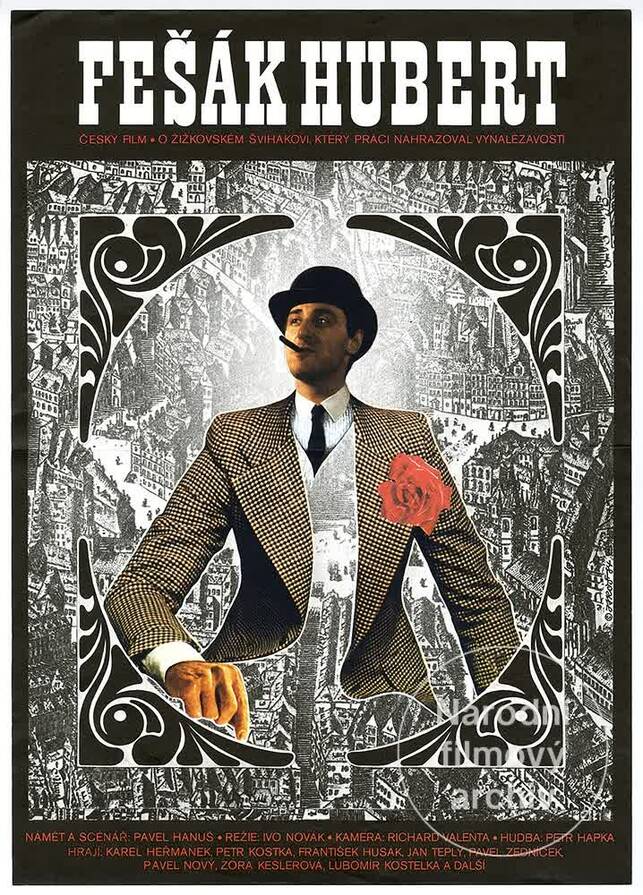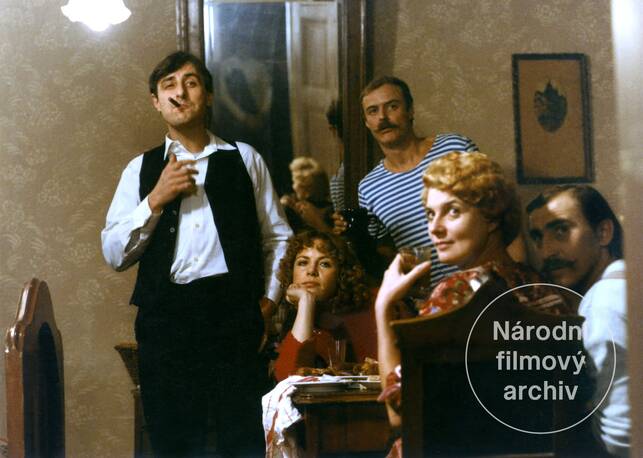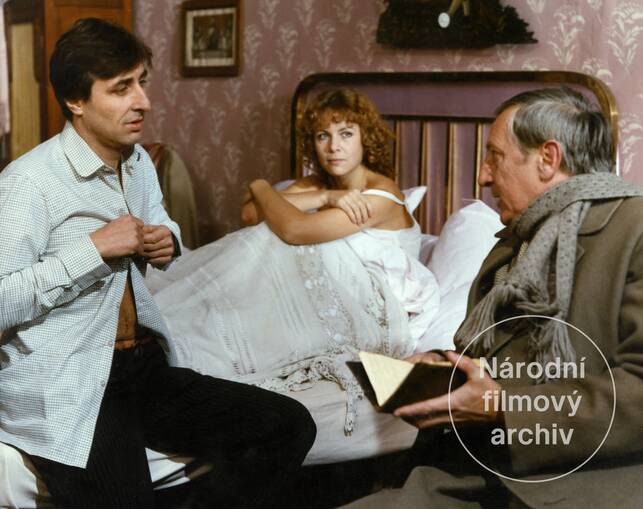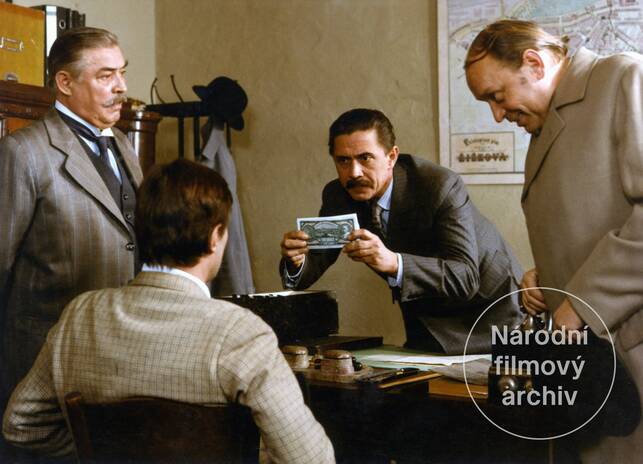Summary
The experienced screenwriter and director Ivo Novák added to the number of films in the 1980s that returned to the era of the First Czechoslovak Republic in a light-hearted fashion. Like Anděl s ďáblem v těle (Angel Devil, 1983) and its sequel Anděl svádí ďbla (Angel Seduces Devil, 1987), Fešák Hubert (Hubert, the Smart Boy) is crowd-pleasing entertainment that relies on the attractive evocation of the “good old days.” The titular protagonist of this film, which was released in the cinemas in 1985, is Hubert Hrabě, known as Fešák (Smart Boy), a Žižkov dandy who is always skirting the edge of the law. Like every likeable rogue, he has a worthy adversary – Police Inspector Mourek, who has long been trying in vain to put him behind bars. However, this defender of justice, who is constantly trying to outsmart his “own” criminal, ends up becoming the victim of his own zeal while hunting forgers that are as good as any in Europe, as Hubert, the smart boy, sets a trap for Mourek. He becomes a popular prototype of a criminal who, in his own peculiar way, punishes injustice on his own “turf.” Hubert’s world is the Prague district of Žižkov and the filmmakers do a wonderful job of recreating this milieu through costumes and locations. Set in the lean years of the Great Depression, the story happily avoids any forced modernisation with its sparkling retro atmosphere. In the style of the American film The Sting (1973) and freely inspired by the Threepenny Opera, Novák and his screenwriter Pavel Hanuš create an old-fashioned idyll in which a dude with Švejk-like qualities must always prevail over a chronically amoral “nobility.” The mainstay of this concept is the man in the title role – Karel Heřmánek, who was then 37 years old (and who appeared in the aforementioned Angel films by Václav Matějka). In the role of Hubert, the much-loved actor created one of his most popular characters. Petr Kostka is a successful foil in the role of Inspector Mourek, and a number of well-known actors and actresses played smaller roles as the distinctive denizens of Žižkov.
Read more





